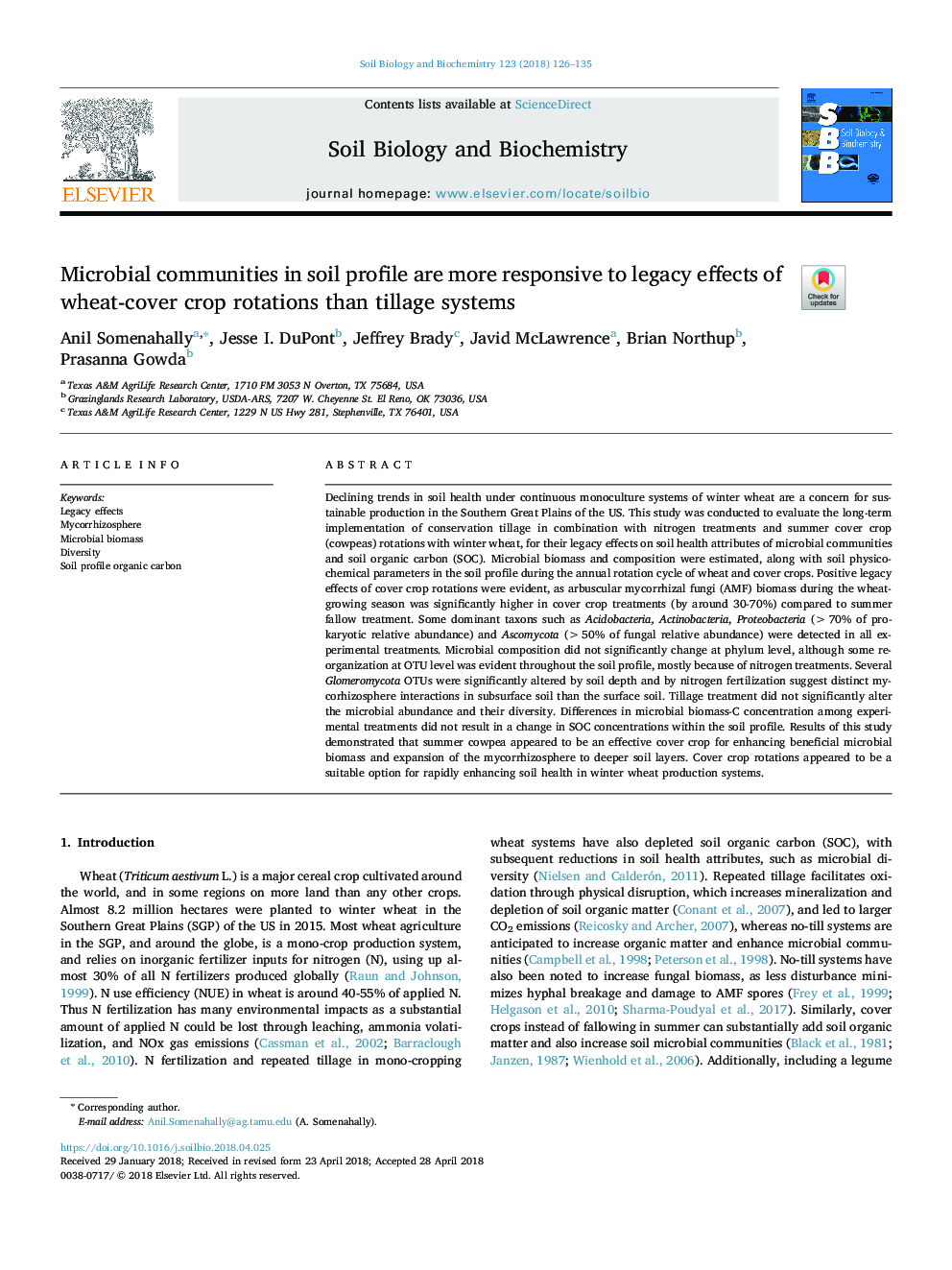| کد مقاله | کد نشریه | سال انتشار | مقاله انگلیسی | نسخه تمام متن |
|---|---|---|---|---|
| 8362642 | 1542561 | 2018 | 10 صفحه PDF | دانلود رایگان |
عنوان انگلیسی مقاله ISI
Microbial communities in soil profile are more responsive to legacy effects of wheat-cover crop rotations than tillage systems
ترجمه فارسی عنوان
جوامع میکروبی در مشخصات خاک بیشتر به اثرات مخرب چرخش های گندم پوشش نسبت به سیستم های خاکی پاسخ می دهند
دانلود مقاله + سفارش ترجمه
دانلود مقاله ISI انگلیسی
رایگان برای ایرانیان
کلمات کلیدی
اثرات میراث، مایکوریزوسفر، بیوماس میکروبی، تنوع مشخصات کربن آلاینده خاک
موضوعات مرتبط
علوم زیستی و بیوفناوری
علوم کشاورزی و بیولوژیک
دانش خاک شناسی
چکیده انگلیسی
Declining trends in soil health under continuous monoculture systems of winter wheat are a concern for sustainable production in the Southern Great Plains of the US. This study was conducted to evaluate the long-term implementation of conservation tillage in combination with nitrogen treatments and summer cover crop (cowpeas) rotations with winter wheat, for their legacy effects on soil health attributes of microbial communities and soil organic carbon (SOC). Microbial biomass and composition were estimated, along with soil physico-chemical parameters in the soil profile during the annual rotation cycle of wheat and cover crops. Positive legacy effects of cover crop rotations were evident, as arbuscular mycorrhizal fungi (AMF) biomass during the wheat-growing season was significantly higher in cover crop treatments (by around 30-70%) compared to summer fallow treatment. Some dominant taxons such as Acidobacteria, Actinobacteria, Proteobacteria (>70% of prokaryotic relative abundance) and Ascomycota (>50% of fungal relative abundance) were detected in all experimental treatments. Microbial composition did not significantly change at phylum level, although some reorganization at OTU level was evident throughout the soil profile, mostly because of nitrogen treatments. Several Glomeromycota OTUs were significantly altered by soil depth and by nitrogen fertilization suggest distinct mycorhizosphere interactions in subsurface soil than the surface soil. Tillage treatment did not significantly alter the microbial abundance and their diversity. Differences in microbial biomass-C concentration among experimental treatments did not result in a change in SOC concentrations within the soil profile. Results of this study demonstrated that summer cowpea appeared to be an effective cover crop for enhancing beneficial microbial biomass and expansion of the mycorrhizosphere to deeper soil layers. Cover crop rotations appeared to be a suitable option for rapidly enhancing soil health in winter wheat production systems.
ناشر
Database: Elsevier - ScienceDirect (ساینس دایرکت)
Journal: Soil Biology and Biochemistry - Volume 123, August 2018, Pages 126-135
Journal: Soil Biology and Biochemistry - Volume 123, August 2018, Pages 126-135
نویسندگان
Anil Somenahally, Jesse I. DuPont, Jeffrey Brady, Javid McLawrence, Brian Northup, Prasanna Gowda,
